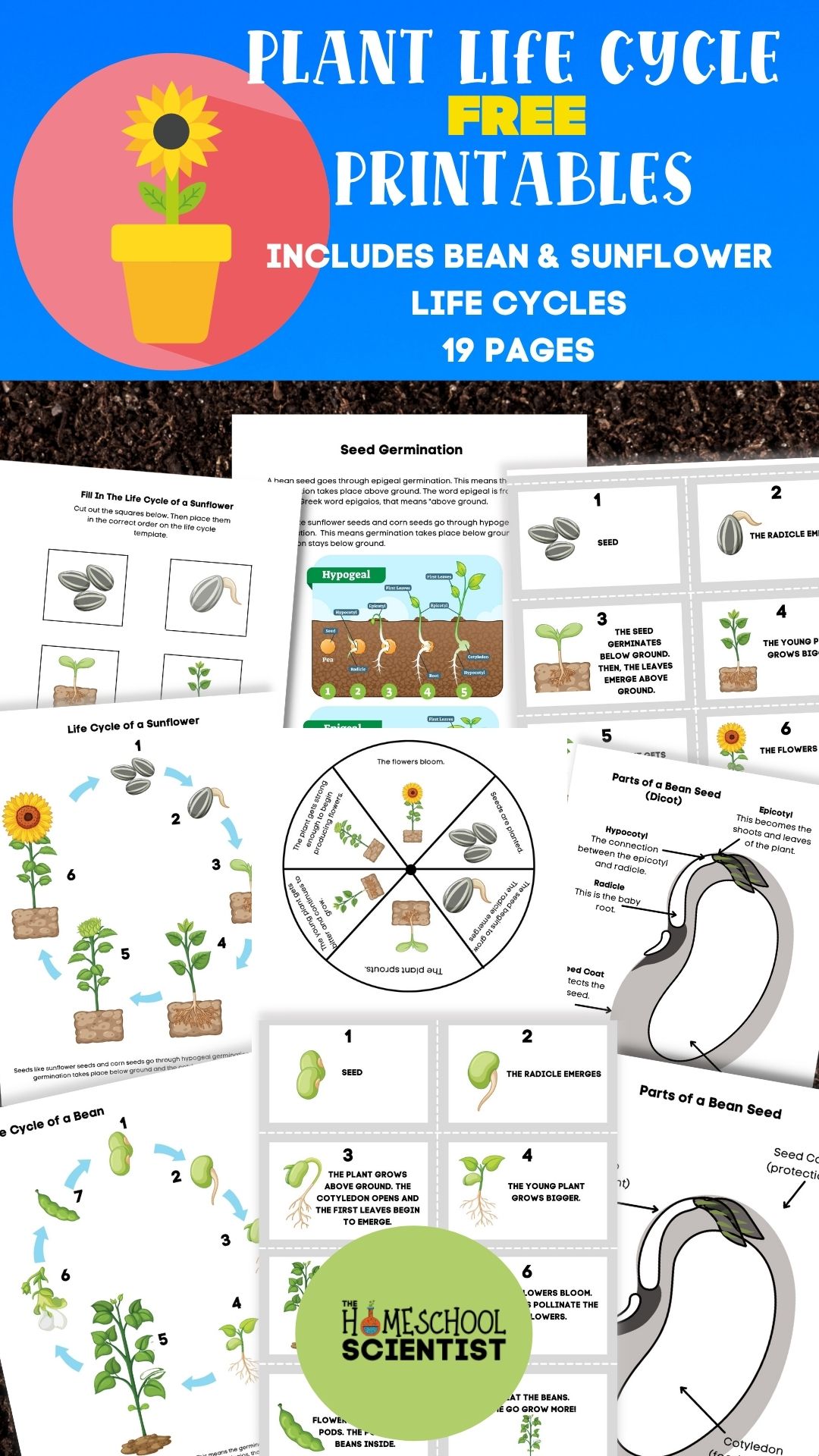Life Cycle Of A Plant Lesson {and Printables!}
One of the best hands-on science lessons you can do with your kids is learning the life cycle of a plant. When my kids were little, they were amazed that they could start with a tiny seed in their hand, give it proper care, and then watch it grow into a large plant with leaves, flowers, fruits, and more seeds. In fact, we are all still amazed when we start seeds indoors or plant them in our square foot garden.
Another great thing about learning about the life cycle of a plant is the fact that you don’t need a curriculum. You can just talk your kids through the cycle as they observe it. The kids will make that connection and remember it longer in a hands-on context than from a textbook. You can always help the information stick by using a nature journal or printables like the ones at the end of this post.
*This post contains affiliate links.
Reading fun plant life cycle books like these can help kids learn as well. (These are some of my absolute faves.)
- From Seed to Plant by Gail Gibbons is one of our favorites. I really do like her books for the amount of information and the diagrams and drawings.
- The Magic School Bus Plants Seeds
- The Tiny Seed (Eric Carle)
- Seed To Plant (National Geographic)
- Plant (DK Eyewitness)
If a hands-on life cycle of a plant lesson sounds like fun to you, check out these posts for ideas on how to get started. You can start small with planting a few seeds in an indoor container or go big and start a garden.
Stages Of The Life Cycle Of A Plant
So, you’ve decided to do a hands-on plant life cycle project. As your plants grow through each stage of development, explain to your child what is happening. Use the above books to help or use this simple guide. If your child wants to learn more, great! Get more books at the library or search for more info online.
Seed
Seeds are basically embryonic (or baby) plants and a food source wrapped in a protective case called a seed coat. When the seed is placed in the soil and given the right amount of water and warmth, it uses the energy from that food source and breaks through the seed coat. This is called germination.
Sprout
When the seed germinates and the tiny plant emerges from the seed coat, it grows both down into the soil and up to the surface of the soil. The part of the plant that grows into the soil is called the root. The roots of a plant anchor it into the soil and give it stability. Roots, also, gather water and nutrients from the soil for the rest of the plant.
When the part of the plant that grows upwards starts to reach above the soil, it is called a sprout. A sprout does not have fully formed leaves yet and may still have the seed coat attached.
Seedling
After the sprout breaks through the surface of the soil, it begins to obtain nutrients and water from the soil through its growing root structure and energy from sunlight to grow its first tiny leaves. When these first leaves develop, the plant is now called a seedling.
Mature Plant
If the right growing conditions exist (nutrients, water, and sunlight), the seedling will continue to grow. It will develop more leaves and branches and get larger. This is considered a mature plant. Mature plants will eventually grow flowers, fruit, and seeds. The life cycle is complete and can begin again.
Life Cycle Of A Plant Printables

To be sure your kids remember the stages, you can use these FREE Life Cycle Of A Plant Printables! Just download them and print them out! Fill out the form below to subscribe to The Homeschool Scientist’s emails and a download link will be sent directly to your inbox.

